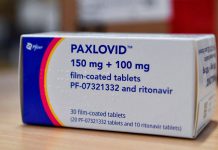As we get old, our risk of osteoporosis increases. It is a common bone-thinning disease characterized by thin and weak bones.
In the United States, more than 5% of men and over 25% of women aged 65 and above have osteoporosis. It increases the risk of fracture after falling from a standing or sitting position.
Osteoporosis is a common problem and there are several treatments available to prevent or treat it. Medications improve bone mineral density, preventing fractures. Please note that the condition cannot be cured, but it can be managed or even prevented with medication and lifestyle changes, including supplementation with calcium and vitamin D.
Generic drugs for osteoporosis are divided into two categories: antiresorptive drugs and anabolic drugs. Antiresorptive drugs slow the rate that your body breaks down bone, which include bisphosphonates, denosumab, estrogens, calcitonin, and others. Anabolic drugs, such as romosozumab and teriparatide, increase your bone formation.
Bisphosphonates: These are the most commonly used osteoporosis medications in men and women. They act by slowing the rate of bone loss. Common bisphosphonates include:
- Alendronate (Generic Fosamax)
- Ibandronate (Generic Boniva)
- Risedronate (Generic Atelvia)
- Zoledronic Acid (Generic Zometa)
Denosumab: Sold under the brand names Prolia and Xgeva, denosumab is advised if you are at greater risk of having a fracture from osteoporosis.
Romosozumab: Available under the brand name Evenity, romosozumab is a monoclonal antibody. It is the newest drug to be approved by the FDA for treating postmenopausal osteoporosis.
Hormonal Therapy: Synthetic parathyroid hormones such as abaloparatide (Tymlos) or teriparatide (Forteo) help in growing bone. Other hormonal therapies include calcitonin (Miacalcin) and estrogen.
Raloxefine: This drug is sold under the brand name Evista. It is a selective estrogen receptor module. The drug offers similar benefits to estrogen when it comes to treating osteoporosis.
Of all the osteoporosis medicines, bisphosphonates are the commonly prescribed drugs. To slow bone breakdown, doctors usually turn to this particular class of drugs.
Dr. David Slovik of Massachusetts General Hospital says, “If someone has a very low T-score, we’ll typically start with the bisphosphonates. I like starting with alendronate because it’s been around the longest, it has shown a good therapeutic response, and it comes in a generic version, which can save patients money.”
Researchers are developing a number of other osteoporosis drugs, including drugs that block a protein called sclerostin that inhibits bone formation. However, Dr. Slovik and other experts think there would be no new drugs approved in the near future.























